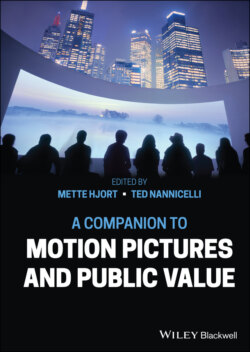Читать книгу A Companion to Motion Pictures and Public Value - Группа авторов - Страница 25
Art as a Capacity for Skillful Making or Doing
ОглавлениеThe term “art” derives from the Latin “ars,” which was the standard translation of the Greek “technē.” As Tom Angier points out in his book on Aristotle, the term “technai” covered what we today call “crafts,” “skills,” “arts,” and various sorts of practical expertise (Angier 2010, 1). Angier adds that the word “technē” derives from the Indo-European root “tek,” meaning to put together the woodwork of a house. A tekton was a carpenter. Carpentry is obviously something that cannot be done well without skill, and to become good at it requires practice and training. To exercise a technē is to activate one’s acquired capacity in an effort intentionally to bring about the desired results. Clearly, not all such attempts are successful, and those that are successful manifest varying degrees of skill.
In this connection, an important passage from Aristotle’s Nicomachean Ethics runs as follows: “Now since building [oikodomikē] is an art [technē] and is essentially a reasoned state of capacity [dunamis] to make [logou poietikē], and there is neither any art that is not such a state, nor any such state that is not an art, art is identical with a state of capacity to make, involving a true course of reasoning” (Aristotle 1984a, 88, 1040a). With regard to an art’s status as a capacity or power [dunamis], Aristotle comments in Metaphysics that “all arts, i.e., all productive forms of knowledge, are potentialities; they are principles of change in another thing or in the artist himself considered as other” (Aristotle 1984b, 124, 1046a).
Aristotle’s conception of technē has been very influential. In a usage that is still prevalent, the term “art” refers to an extremely diverse category of purposeful human practices, each of which requires some level of acquired skill. The OED thus defines “art” as “skill, its display, application, or expression,” especially as the result of knowledge or practice. With this conception of art in mind, people speak of the culinary arts, the martial arts, the arts of torture, divination, massage, body-building, upholstery, manicure, investment, origami, fly fishing, poker, pottery, motorcycle maintenance, persuasion, gardening, juggling, azuelos, millinery, and so on. As some of the items on that long list indicate, many useful distinctions are commonly drawn within the general category of the arts. For example, “medicine” names a type of art covering a variety of more specific health and illness-related skills and practices, such as ocular surgery.
Given the definition of “art” that we have just evoked, there can be no serious doubt whether the ability to use motion picture technologies also qualifies as an art. Anyone who asks whether film is an art, and if it is one, how that could be so, must have some other, far more restrictive idea of art in mind (for a discussion of such concerns, see Stecker 2009). It should be uncontroversial as well that motion pictures can manifest specifically artistic value—assuming that there is such a thing, which is the topic of the next section.
